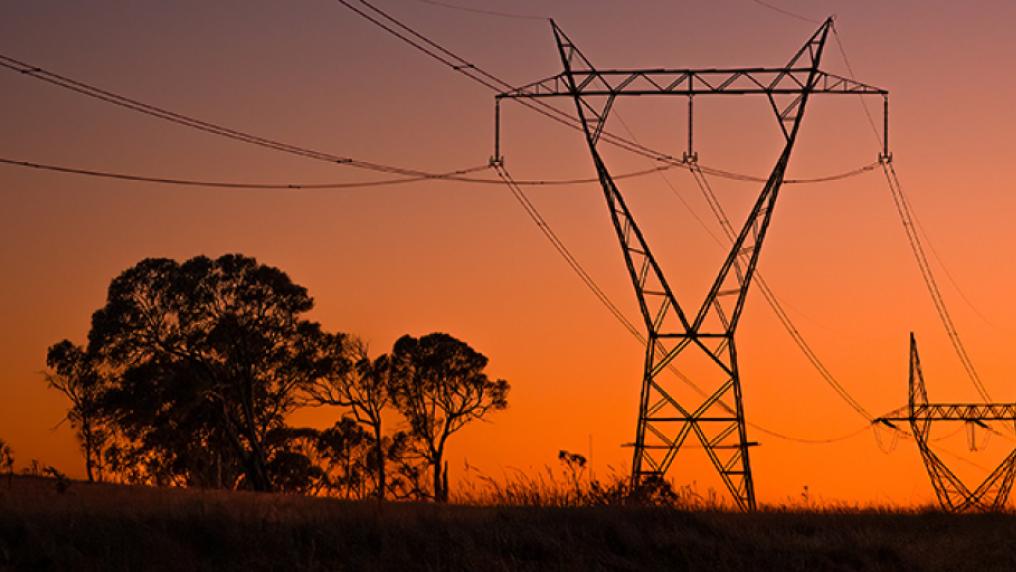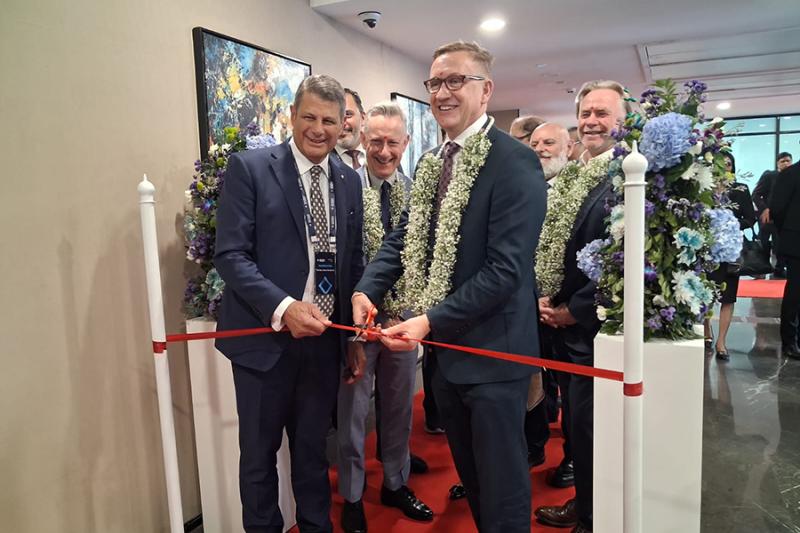Powerful progress towards bushfire prevention

Through an industry-supported program, researchers at Victoria University have developed a device that could significantly improve bushfire prevention initiated by power lines in regional Australia and around the world.
In regional areas that often have a large amount of vegetation on the ground, fragile overhead power lines present a serious fire hazard.
“If a tree branch falls on the conductor, the power line, which is now under tension, could snap and fall. It’s then likely to make contact with dry grass and branches which could start a bushfire through electrification,”
Victoria University Associate Professor Cagil Ozansoy explained.
This high-risk and hazardous situation is what Ozansoy and Douglas Gomes, ARC Industry Fellowship holder at Victoria University, are trying to tackle through their research at Victoria University, in partnership with United Energy, PowerCor and AusNet Services.
The research has also been supported by a grant from the Victorian Government.
“We’ve developed a device that can detect broken conductors in single wire earth return systems,”
Cagil said.
“The device is able to detect and localise a conductor that has been broken in less time than it takes the conductor to reach the ground. We’re particularly targeting regional areas. Our main objective is for the device to lead to commercialisation opportunities.”
Fixing the problems from broken power lines
Networks in regional Victoria are deep into their lifespans and displaying numerous problems. Although manual inspections are conducted every few years, Gomes said these aren’t regular enough to monitor potential hazards.
As networks in regional Victoria begin to age, manual inspections are being conducted to identify potential problems.
“The technology present in the market today is not able to detect if a conductor has been broken in remote parts of the system, nor can it estimate the location of that breakage,”
Gomes, who received an Australian Research Council fellowship to undertake the research, said.
“This means when a problem is discovered or reported by a customer there needs to be a thorough visual inspection. It’s a very inefficient process. To date there has been no cost-effective way to handle this problem.”
Gomes and Ozansoy’s new device could help to rectify this situation.
“They’re cost-effective and would be installed at the edge of the network,”
Gomes said. “They can not only detect if a conductor has broken, but where the breakage has occurred. Since we are carefully observing the electrical line, we can then identify other problems.”
So far, they’ve trialled the device in five different networks and achieved very promising results.
Gomes and Ozansoy’s research partnership began back in 2006 when Victoria University received a government grant to support Gomes’s PhD.
At the time they were investigating whether they could use datasets from previous experiments to develop a method capable of detecting vegetation touching powerlines.
“We then started out looking into whether a conductor breaks or not,”
Gomes said. “Now we’ve been able to detect where the breakage happens. If you have a good idea of where a fault may be, especially in remote areas, you can direct resources, such as the Country Fire Authority, to that area to minimise the risk of a potential bushfire starting to spread.”
The team is now looking into commercialisation opportunities, and both Gomes and Ozansoy see great potential to improve fire safety for the local community.
“Power lines impacted by bushfires have led to huge loss of life, physical injuries and psychological distress,”
Ozansoy said. “I’ve always been driven to make a real contribution through my research to protect people, forests and animals from the potentially devastating impacts of bushfires.
“We’ve been meeting with utility companies all over the world because they really see the importance of this. Victoria University has placed us in a strong position to discuss our research and push its commercialisation.
“We now need to deliver the technology and show that it works because it’s only a matter of time until such technologies become mandatory to protect the rural communities.”
Gomes hopes the research can be applied in his home country of Brazil as well.
“We have many highly vegetated areas in Brazil that are exposed to fires, so this technology would not only be great for Victoria, but for many other places around the world exposed to fire risks from electrical assets. California and Canada are other places that could really benefit from this technology.”
Deriving benefits from a VU partnership
Victoria University’s research program has focused on industry engagement for over a decade.
“Our researchers are used to working with industry and delivering outcomes for them,”
Professor Stephen Gray, Executive Director for the Institute for Sustainable Industries and Liveable Cities, said.
“Douglas and Cagil’s work is an excellent example of this. It’s been a very close collaboration between the university and companies such as Powercor, Citipower, United Energy and AusNet Services, but really led by industry needs and timelines.
“By partnering with Victoria University through its industry-supported programs, industry bodies have the opportunity to develop skills in their future workforce, and access greater knowledge and solutions to help solve some of their current challenges.”
This article first appeared in Engineers Australia's online publication create.



